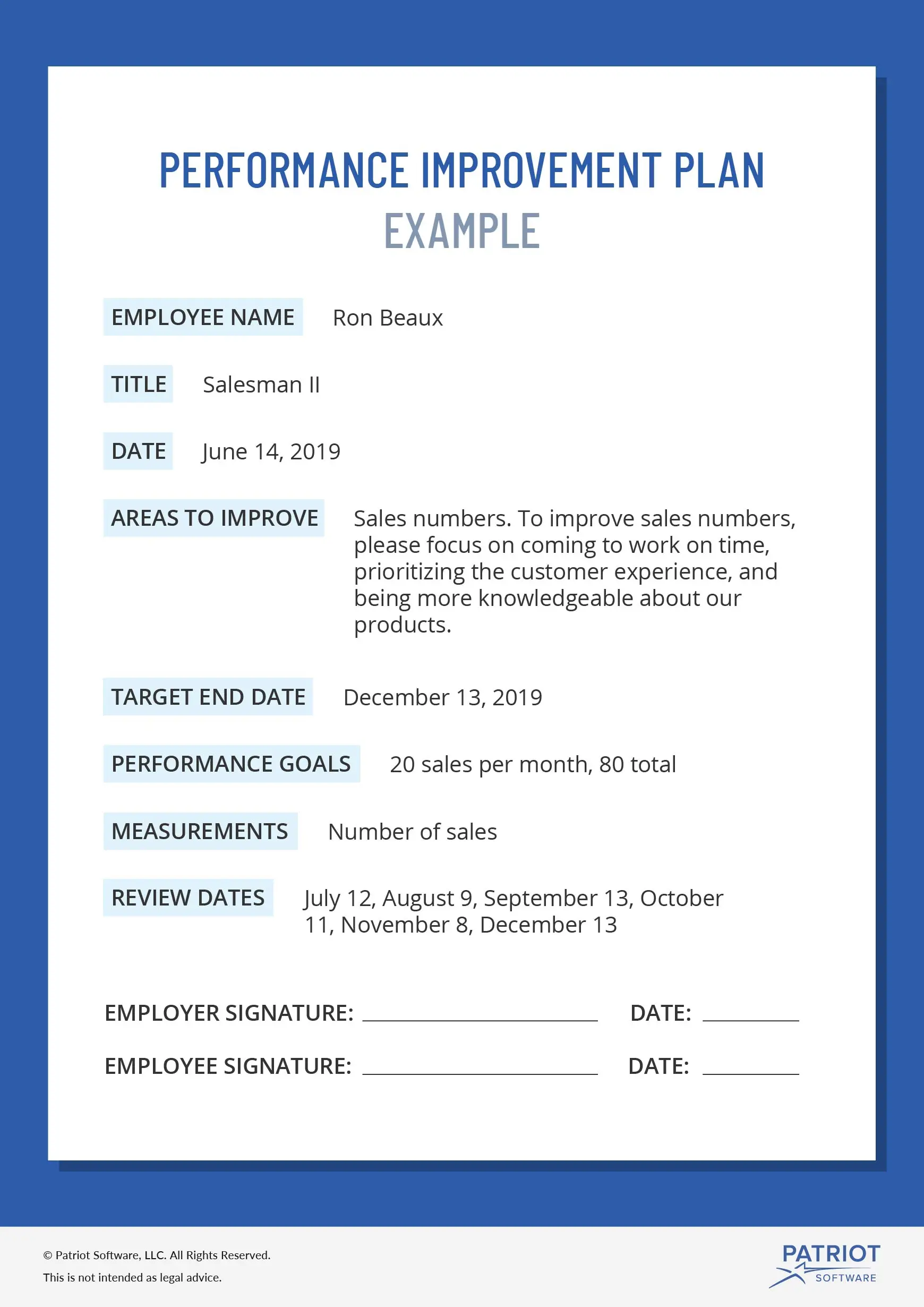Is one of your workers going down the rabbit hole of idleness? If so, you may consider putting them on an employee performance improvement plan (PIP).
But before you draw up the paperwork, really get to know the infamous performance improvement plan.
Ask yourself questions like, When is writing a performance improvement plan necessary? Is a PIP simply the first step on the way to firing an employee? Does it ever work? Read on to learn more about PIPs and whether they’re right for your business.
What is an employee performance improvement plan?
A performance improvement plan is a formal document employers use to help underperforming employees meet their job goals.
In addition to listing position goals, PIPs set deadlines for meeting goals and consequences for failing to do so.
An employee performance improvement plan aims to:
- Highlight low-performing areas
- Set reachable job goals for employees
- Encourage communication between employers and employees
- Provide a clear outline of employer expectations
- Give an employee direction and support
- Specify the importance of reaching goals
- Improve an employee’s performance
- Document a potential firing
In some cases, performance improvement plans serve as one of the first steps to firing an employee legally. Some employers put an employee on a PIP to kickstart the termination process.
However, an employee performance plan isn’t synonymous with termination. Many employers successfully use PIPs to retain talented workers whose performance has dipped.
If you’ve noticed an employee struggling with their performance, consider meeting with them and implementing a PIP.
Performance improvement plan template
No two PIPs are the same. You must tailor an employee’s performance improvement plan to their unique needs.
Although everything about a PIP is unique, you can create a standard performance improvement plan template to get started.
Your PIP template should include the following information:
- Employee’s name and job title
- PIP start date
- Underperforming areas
- Performance goals
- Measurements
- PIP target end date
- Review dates
- Employer and employee signatures
After creating a standard template, fill in the unique employee information.
Performance improvement plan example
Let’s say one of your salesmen’s sales record has been dwindling lately. Your employee performance improvement plan might look like this:

Tips for starting the performance improvement plan process
If you decide you need to put an employee on a PIP, use these tips to maximize effectiveness.
1. Draft a performance improvement plan policy
Consider having a performance improvement plan policy in place beforehand. Your policy might list some circumstances that require the use of performance improvement plans.
Creating a policy about the use of PIPs can also help to avoid the element of surprise. If you do have to put an employee on a PIP, they should have an idea of what it is.
2. Get to the root of the underperformance
You can’t expect a performance improvement plan to be effective if you don’t know what’s hurting productivity. Before you start an employee on a PIP, find out why their performance is waning.
You might discover that the employee is already aware of their underperformance. Or, an employee might explain that they’ve been swamped and unable to successfully prioritize projects.
Meet with your employee and ask them to be candid about their performance. And, be direct right back at them. You may opt for a PIP alternative, depending on the reason for the underperformance.
For example, you may find out that an employee’s poor performance is because they need a flexible work agreement for better work-life balance. Or, the employee might be picking up the slack from a co-worker.
If a PIP is still the best option, create a tailored plan based on the root of the employee’s underperformance.
3. Create a tailored plan
An employee’s struggles are likely not the same as another employee’s.
When creating an employee performance improvement plan, pinpoint areas the employee needs to improve.
Also, be specific when outlining goals in the PIP. Your employee should not be confused by their improvement plan. Instead, the plan should explicitly state what the employee needs to do.
4. Check in with the employee regularly
Giving your employees the tools they need and the freedom to fly is absolutely essential in business. However, giving an employee a list of areas to improve in and failing to check in with them is a recipe for disaster.
An employee on a performance improvement plan is likely conscientious of how they’re doing. In many cases, a PIP requires an employee to do a complete 180 from their current work habits. Your employee may be unsure whether they’re correctly following their PIP.
Meet with your employee regularly to see how they’re doing. Find out if they’re running into problems that are limiting them from achieving the goals outlined in their PIP.
Encourage open communication with all your employees, including those not on a performance improvement plan.
Bottom line: Is a PIP worth it?
In some cases, a performance improvement plan is necessary.
Done effectively, a performance improvement plan can provide guidance to a struggling employee. When the PIP ends, you may be left with a productive employee who is eager to continue bettering themselves.
Throwing an employee on a plan is not worth it if you’ve already decided on letting them go. If you want to start an employee on a plan as a precursor to termination, what’s the point (besides documentation)?
And sometimes, an employee doesn’t meet their PIP goals. You may need to fire a worker if they don’t try to improve. Be sure to store the plan in your records as documentation of your efforts.



